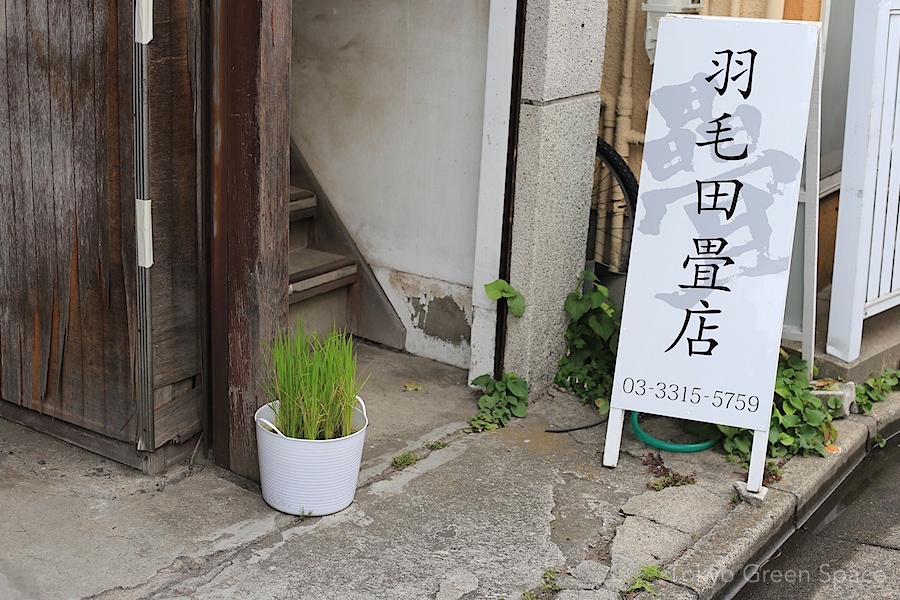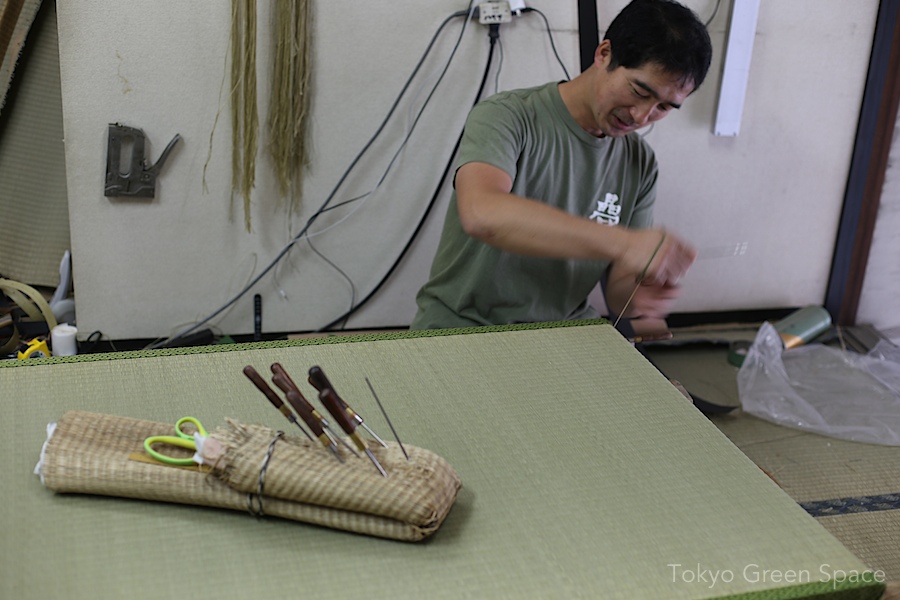
「私たちの田んぼを見ましたか」と聞かれました。畳屋のオーナーは歩道に置いたバケツで稲を育てています。Shibaura HouseのKanto Tour Guideの途中で偶然に会いました。家の畳を変えようかと考えています。
On Shibaura House’s Kanto Tour Guide in Suginami, we saw an open door and a man making tatami mats above the garage. The friendly proprietor of Haketa Tatami shop in Shin Koenji told us that his family has had this business in Suginami for decades, starting with his father. In addition to showing us his craftsmanship, he asked us whether we had seen his “rice field.” It’s in the white bucket, to the left of the shop sign.
I also learned that tatami mats should be changed every 3 or 4 years. Ours are coming up on 6 years, so maybe it’s time to order a new set?


